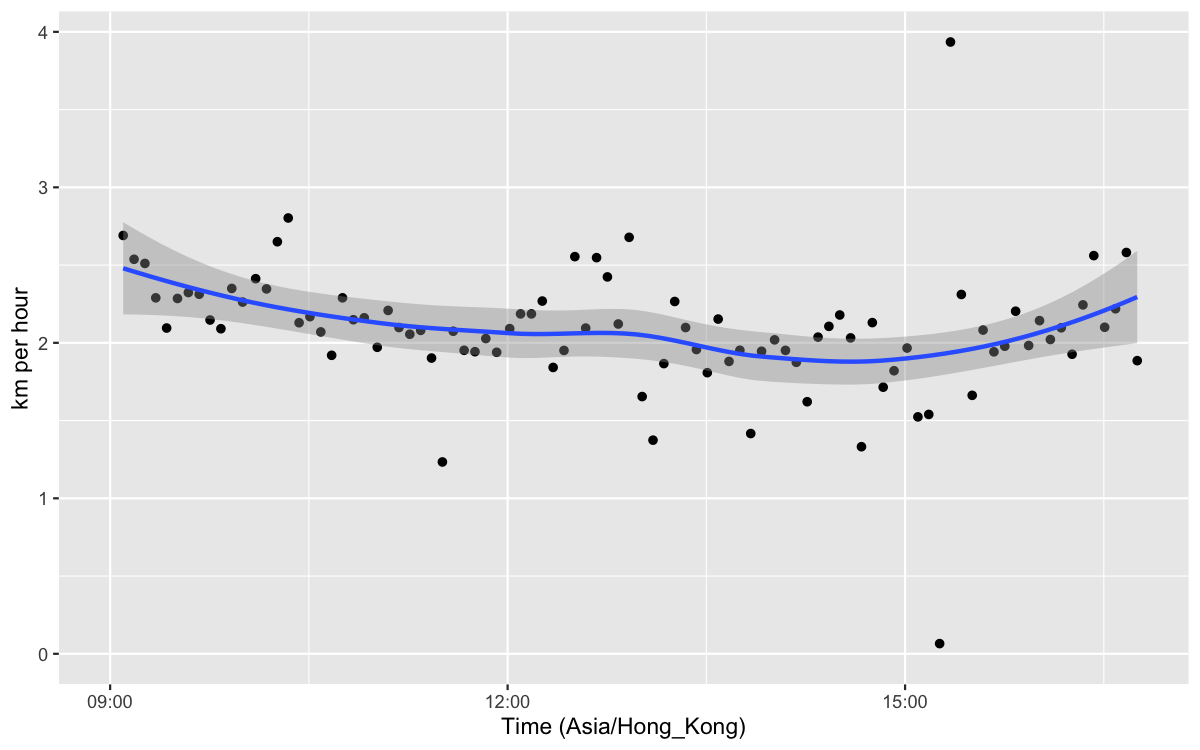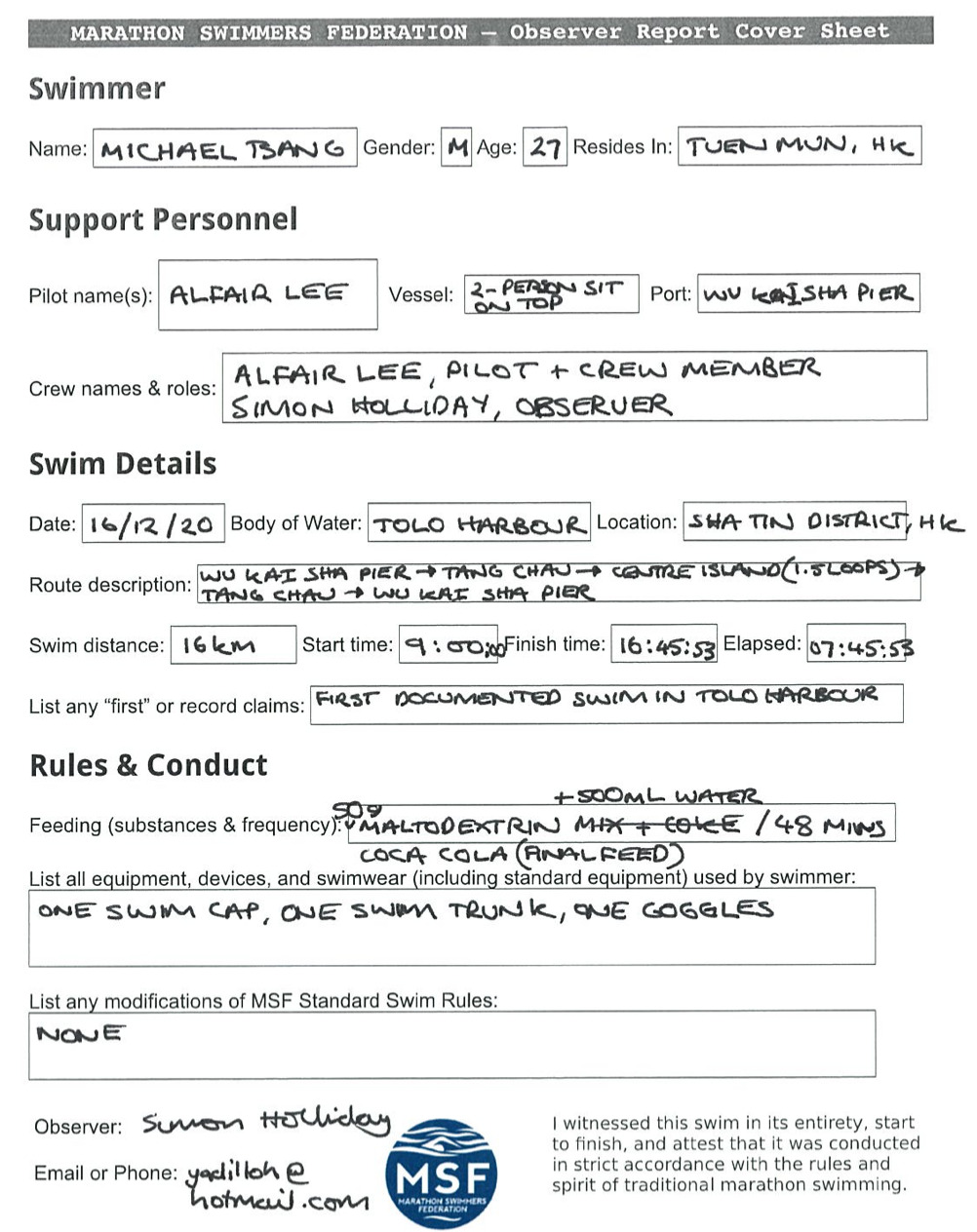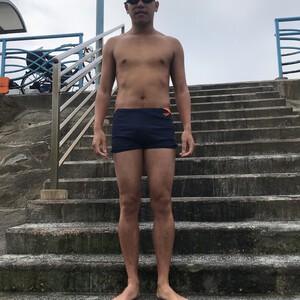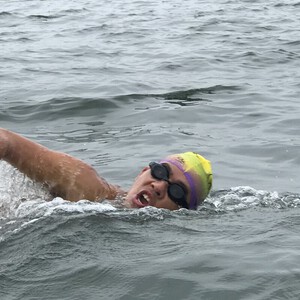Michael Chun Chi Tsang - Tolo Harbour

Tang Chau - Centre Island multi-loop from Wu Kai Sha Pier
16.3 km (10.1 miles)
7 hours, 45 minutes on 16 December 2020
Observed and documented by Simon Holliday
First

Contents
- Swimmer
- Support Personnel
- Swim Parameters
- Swim Data & GPS
- Observer Log
- Narrative
- Photos
- Video
- Appendix A: Weather Data & Tide Prediction
Swimmer
- Name: Michael Chun Chi Tsang
- Gender: male
- Age on swim date: 27
- Nationality: Hong Kong
- Resides: Tuen Mun, Hong Kong
Support Personnel
- Alfair Lee - kayaker
- Simon Holliday - observer
Observer experience: English Channel swimmer (2011, CSPF), HK – Macau swimmer (2015), round Hong Kong swimmer (2017); co-founder and director of Splash Foundation.
Escort vessel: double kayak
Swim Parameters
- Category: Solo, nonstop, unassisted.
- Rules: MSF Rules of Marathon Swimming, without exception or modification.
- Equipment used: textile swimsuit, cap, goggles
Route Definition
Wu Kai Sha Pier → counter-clockwise around Tang Chau → counter-clockwise around Centre Island (1.5 loops) → clockwise around Tang Chau → Wu Kai Sha Pier
- Body of Water: Tolo Harbour (semi-enclosed sea inlet with a narrow outlet in the South China Sea)
- Route Type: Multiple island loop with circumnavigation.
- Start and Finish Location: Wu Kai Sha Pier (outermost landing step on embankment) (22.42921, 114.23450)
- Intermediate Waypoints:
- Tang Chau (22.44556, 114.25811) - counter-clockwise outbound, then clockwise inbound.
- Centre Island (22.43723, 114.22128) - counter-clockwise 1.5 loops
- Minimum Route Distance: 16.3 km (10.1 miles) (map)

History
No known previous swim of this route.
Swim Plan
Sketch by Alfair Lee
Swim Data
- Start: 16 December 2020, 09:00:00 (Asia/Hong_Kong, UTC8).
- Finish: 16 December 2020, 16:45:53
- Elapsed: 7 hours, 45 minutes, 53 seconds.
Summary of Conditions
| Feature | Min | Max |
|---|---|---|
| Water Temp (C) | 21.3 | 21.7 |
| Air Temp (C) | 13 | 15 |
| Wind (knots) | 3 | 6 |
GPS Track
Trackpoint frequency: 5 minutes. Download raw data (CSV).
Speed Plot
Nutrition: Maltodextrin drink. Coke on final feed.
Observer Report
by Simon Holliday
Michael began his 16km swim from Wu Kai Sha Pier at 9am on Wednesday 16 December. The route he chose was two loops around Tang Chau (a small sand bank towards the mouth of the Channel) and 1.5 loops around Centre Island (a small island at the base of Tolo Harbour). To my knowledge, this route has not been completed before.
Michael completed the swim in 7hrs 45 minutes and 53 seconds. This was around 1hr 30 minutes longer than he had anticipated.
He instructed his Crew member, Alfair Lee - who was on a two-person kayak with Observer, Simon Holliday - to feed him at 48 minute intervals. His feed was maltodextrin mixed with water, with Coca Cola on his final feed.
Water temperature was 21.7 degrees centigrade. Weather conditions were overcast and mainly calm throughout with wind speed reaching a high of 5 or 6 knots and waves up to half a metre out to and the on the return leg to Tang Chau.
Michael started the swim strongly. His stroke looked long and he was catching water well. His stroke rate was consistent throughout the swim, at a median average of 66 strokes per minute. Michael’s stroke seemed to shorten, his body beginning to snake slightly and his speed dropping, after rounding Centre Island. This seemed to be due to tiredness, as Michael shared as he came in for a feed. Hi drop in speed also coincided with the swimming conditions becoming more adverse with wind against. But he seemed to regain his form, however, as Tang Chau came into sight, rounding strongly and opening up his shoulders as the Wu Kai Sha Pier, his start and finishing point, got closer.
There was plenty of activity in the Channel - recreational swimmers and fisherman near the shoreline, police boats that took a healthy interest in our movements, trawlers and squid boats.
Michael showed great determination in completing this swim and I hope it will give him confidence for his English Channel Crossing next year.
Narrative
by Michael Tsang
What inspired you to do this swim?
I started intensive training in open water swimming since summer 2018. In January 2020 I completed my goal race, Cold Half, in Hong Kong. I believed that race was a reasonable foundation for me to start training for challenges such as the English Channel due to the similarity in conditions. As I was planning a working holiday in Europe in 2021, I thought that swimming the English Channel would be a fun and extraordinary thing for me to do while I was on the working holiday. Therefore, I booked one of the very few remaining slots in September 2021 early February. Moreover, I normally travelled to Europe every year to do TrailO world ranking races. Looking at the race calendars, I found out that it would be possible to arrange a trip such that I could participate in a 21.5 km marathon swimming race called Vidösternsimmet in Sweden in August, then travel to Poland to do TrailO world ranking races in the week afterwards. I also signed up in February. As that race was a lake race, it would be a good race to see where my ability was, i.e. my speed and endurance, in calm water, to see if I got any improvement from my training, and to get useful data to base my further training on.
I planned three training blocks towards the Channel. The first block ran from February to June 2020 and concluded with the race above. However, by the middle of March, COVID-19 became a global pandemic and the world was shut, while in Hong Kong, pools were already shut as a precautionary measure since late January. Therefore I lost my first training block completely. I initially kept swimming in the open water but I also nearly stopped by June when the race was announced to be postponed to August 2021. By that time the sea became too hot (28°C or more) for any serious swimming for me. Instead, I changed my role and became the observer for Isaac's 10 km swim in August, which became the first MSF documented swim in Hong Kong and laid a foundation for a marathon swimming community here.
I resumed training mid-September when restrictions were relaxed and gradually built up my endurance and speed again. My second training block was planned from November 2020 to March 2021 when I would build up myself to a "rehearsal swim" of about 30 km (or my other dream swim, 45 km round Hong Kong swim) in the open sea in February, when the sea temperature went down to 16°C - 18°C, in conditions as similar to the Channel as possible. If I could complete it, I would have total confidence to swim from Dover to France. Due to budget reason I decided to put my other dream swim on hold, and because my first training block and the race were lost due to the pandemic, I revised my plan for my second training block. Now my plan is to do a 16 km "benchmark swim" in calm water as early in the season as possible once the sea temperature drops below 24°C, i.e. early December, as a replacement to my lost race in order to gather data for further training, then to do a 25 km "rehearsal swim" in February in the open sea if the "benchmark swim" goes well. Both are done under strict accordance with traditional rules and intended to be submitted as MSF documented swims. The "benchmark swim" will be done in a sheltered bay close to shore using kayak support only, like the swim Isaac did in August, while the "rehearsal swim" will be motor supported in the open sea like swimming the Channel. Doing these 2 swims will not only build my confidence in swimming the Channel, but also to strengthen the foundation of the marathon swimming community here in Hong Kong by getting more people to be involved as crews and observers.
Please describe how you planned for the swim.
The "benchmark swim" is realised on 16th December. It is done in Tolo Harbour, mostly free from tidal current and sheltered from wind in most directions, the calmest sea I can find in Hong Kong. I designed a course which is as close to 16 km as possible in a place I'm familiar with, and close to kayak rental as well.
My observer Simon Holliday is the most experienced marathon swimmer living in Hong Kong now, having done a Channel swim, a Hong Kong (Lantau) to Macau (Coloane) swim, and a round Hong Kong swim. He is the co-founder and director of Splash Foundation, a charity which teaches basic swimming skills to domestic helpers and underprivileged people who did not have the chance to learn it through the education system. However, as he also did not have previous observing experience, I needed to brief him beforehand, including the tools that I used in Isaac’s swim in August.
My crew Alfair Lee is a very experienced ultra-runner and paddler who also paddled in Isaac’s swim in August as well. He also lives in Sha Tin District and paddle there a lot, so he is very familiar with the sea there. Therefore I have a total confidence in him to guide me.
According to my race results throughout 2019 and 2020, including shorter races from 3 to 5 km, and my previous marathon swims including Lake Geneva Classic and Cold Half, I believed that my speed would be about 2.5 km/h. Therefore I planned for the swim taking me 6:24 and feeding every 48 minutes, 7 feeds in total, swimming 2 km between each feed.
How did the swim go, generally? Did you face any unanticipated challenges?
Two and a half weeks before my swim, I injured my head while diving. I went to the hospital and got 3 stitches in my head. As a result I was out of water for 9 days in the period supposed to be my training peak. While I was recovering from the injury, COVID restrictions were enacted again due to the 4^th^ wave and pools were shut again. My taper period shortened from a week to only half a week as I had to get back in water after I recovered from my injury. Judging from my training log I believed that I was fit enough only for a 10 – 12 km swim, but after chatting with my friend Stephen Maloney I decided to go on the full 16 km course.
The weather was very good. A monsoon brought down the air temperature to 13 – 15°C on that day however the sea remained warm at 21°C. As the sea is sheltered, the wind remained within BF 2 which was ideal for a calm water benchmark swim.
I and Alfair rent the support kayak at 08:00, paddled it to the start, and met Simon there. I started on schedule at exactly 09:00:00 as planned. I did my first and second feed mostly as expected. However starting from my third feed I felt I was lagging behind schedule. By 7 km I started feeling my back tired and sore, and then my quads as well, where I only expected fatigue to set in about 2/3 to 3/4 into my swim. My fourth feed was supposed to be done while I was rounding Centre Island but it was due not long after I reached the island. When I left the island I was notified to take my fifth feed and at that time I knew I was doomed. I was already half an hour behind schedule. I planned that, if I already lagged behind for more than half an hour I would cut it short because I might run out of time. I was just at the edge of it and I continued. The return segment from Centre Island to Tang Chau was a really long stretch which was demoralising. My back was sore to the point that my strokes were powerless, and I couldn’t kick at all, dragging my straight legs behind (I normally do 2-beat kick). My seventh feed was done at the place when I expected my sixth feed, which means I was already lagged behind for a full 48 minutes. I asked the distance I covered every feed. In my eighth feed the crew told me that I still had 2.5 km to go. My mood went down immediately at that point, knowing that it was still a long struggle back home which would take me more than an hour. I ran out of my normal feeds (I planned 7 and prepared for 8) and consumed coke afterwards which was suggested by my crew as a spare so I took it on board.
I finally reached the finish in the most depressed mood I have ever had since I started swimming, 7:45:53 since the start of my swim, more than an hour more than my plan. All my positive mindset when I started had been flushed away completely by the time I reached the finish, and I was in serious self-doubt since then because I couldn’t even keep my target pace in a calm sheltered bay, how the heck would it be possible in the open Channel? In a calm sheltered bay, if I keep swimming, no matter how slow I am, I will eventually reach the finish, which was what I did. However, in the Channel, I would be washed away by the tide if I couldn’t reach a certain waypoint by a certain time, like the fate of “the Novice Triathlete” Stuart Handley in this September.
After the swim, I really question my ability to swim the Channel in 2021, or even to do a 25 km “rehearsal swim” in February, especially considering that pools are now closed again due to COVID restrictions making me unable to speed-train. I’m considering further adjusting my training plan, maybe to further cut my “rehearsal swim” in February short, from 25 km to 17 km (i.e. half the Channel distance), and also to change my training focus to keep my speed consistent instead of training for raw speed, as my speed dropped a lot in my rehearsal swim from 2.5 km/h at the beginning to 1.9 km/h in the latter half, if I decide to continue training. However, there is also a possibility for me to give up or to change to a relay as well, as this swim has shown that I don’t have my desired ability at this training stage.
Photos
Click to enlarge.
Video
Appendix A: Weather Data & Tide Prediction
Air Temp and Wind Speed
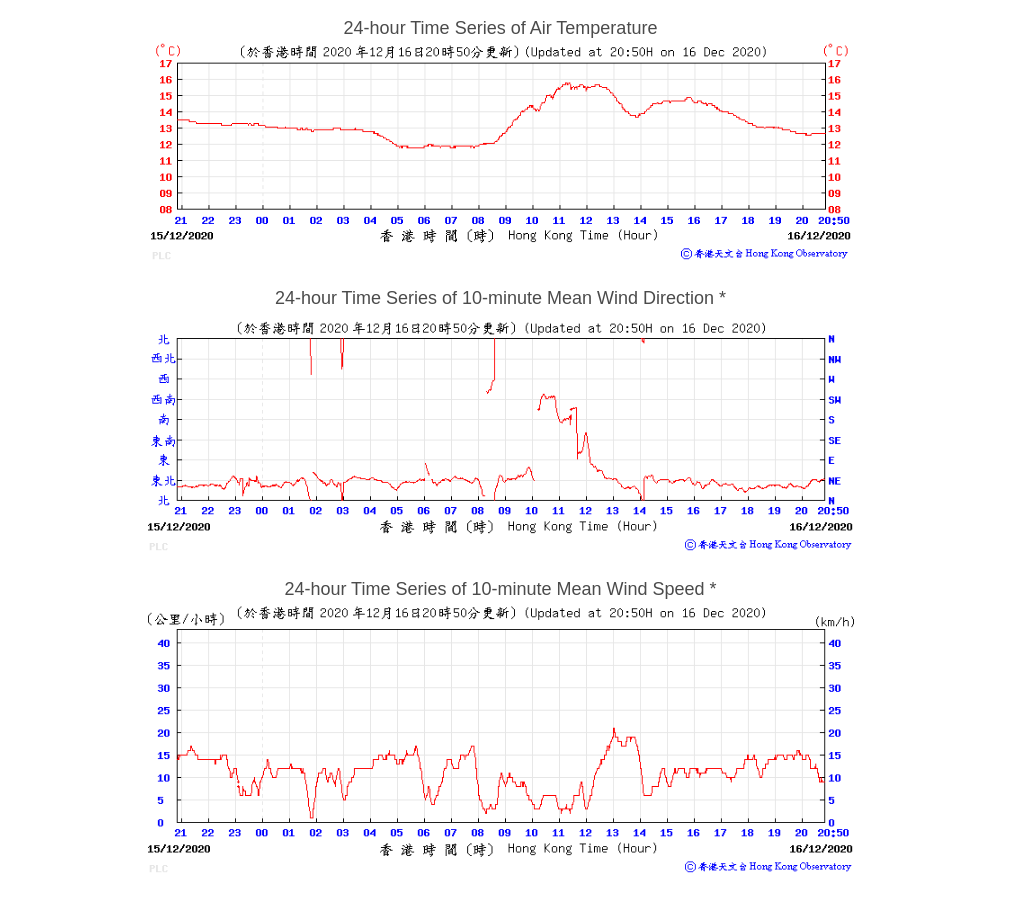
Tide

Current


